Руководство путешественника
Smolyan Region
PRESENTATION OF SMOLYAN REGION
Smolyan region is situated in South Bulgaria, in the central part of the Rhodopes, on a territory of 3194 sq.km, that takes 2,9% of the whole territory of the country. It΄s bounded with the regions of Plovdiv, Pazardjik, Kardjally, Blagoevgrad and to the south – with Greece republic. Woodland stretches on a big part of the territory – 2531 thousand decares (70%) and agricultural lands cover 825 thousands decares (25%).
The climate in Smolyan Region is defined by the combined action of typical European moderate continental climate, the high above sea level, the mild and warm Mediterranean winds, coming from the relatively close situated Aegean Sea and solar radiation. The middle temperature of the air during the year is 5 – 10 º C.
The altitude of the region varies from 600 m up to 2191 m. above the sea level. Smolyan Region includes The Rhodopes highest part, including Perelik share, with the highest peak Golyam Perelik (2 191 meters above sea level mas). The number of peaks above 2000 mas is four: Golyam Perelik (2191 mas), Golyam Snezhnik (Karlak)(2188 mas), Golyam Persenk (2091 mas) and Persenk (2074 mas). The relief in separate municipalities (Madan, Nedelino, Rudozem, Devin) is mountainous-hilly. The average above sea level in these is lower – 600 – 700 meters. Typically mountainous are the municipalities of Smolyan, Chepelare, Borino, Dospat. The average above sea level there is round and above 1200 meters. At a comparatively small area in the region nature has formed a great variety of rocks (marbles, rhyolites, sandstones). The upheaval of these in the geological periods has saturated the region with attractive rocky formations, like canyons, gorges, caves, peaks with wonderful panoramic views.The presence of a number of caves is characteristic (about 900 in number); just three of these, however, belonging to the Smolyan region have been well laid out. These three have a great significance for tourism development: Yagodinska (Yagodina village, Borino municipality), Dyavolsko garlo (Trigrad village, Devin municipality), Uhlovitsa (Mogilitsa village, Smolyan municipality). The prevailing part of caves are a real challenge to thrill seekers. The access to them is only with guides – speleologists; specialized equipment is supplied by cave and mountainous clubs. Caves themselves, as well as their surrounding areas, are suitable for practicing different types of extreme sports like rock-climbing, not well laid out caves penetration, mountain biking, etc.
The Region is famous with a series of other natural formations: Chudnite mostove, Slona, Trigradsko and Buynovsko gorges. Waterfalls’ canyon, Orfeevi skali (rocks), groups of rocks Kichikaya, Sadilishteto, the rocky crown above Smolyan.
The bigger rivers in the region are Arda (241.3 km), Vacha (111.5 km) and Chepelarska (85.9 km). Their upper river valleys are very picturesque with the cut in the rocks gorges and canyons. They are also attractive for fishing tourism.
There are 2 big dams in Devin municipality –Vacha and Tcankov kamak; the second biggest dam in this country is in Dospat municipality – Dospat dam (420 mln cubic m). It is used for electricity production, fish breeding, fishing and water tourism. Other prominent water reservoirs are Zlatograd dam and a series of micro-dams. In the Smolyan valley northern part Smolyan lakes are located, which are often called „Orpheus’ mountain eyes”.
Smolyan Region is one of the richest in mineral waters in this country. Mineral waters in Devin municipality have very good properties 16º to 76ºС in the deposits „Bedenski bani” near Breze village, in the town of Devin (water with very good table qualities), Mihalkovo village (the most aerated in a natural way vaglekisela water in this country table and healing with a temperature of 16-26 ºС), „Posestra”area and in Nastan quarter „Nastan 1” and „Nastan 2”. Mineral water has an inner as well as outer application for healing a series of diseases.
The thermal spring in Banite village has a discharge of 18 l/sec and a temperature of 35-43оС and mineralization about 900 mg/l, which defines the development of balneo-healing and SPA tourism in the municipality.
The Middle Rhodopes have preserved a considerable biodiversity - out of the flora representatives 60 species are world important, 40 species are Bulgarian endemic and 45 species are Balkan endemic. The region is one of the few in Europe, inhabited by brown bear, wild goat and wolf in natural conditions.
Protected areas are places, requiring special care on behalf of the state. The access to them has been regulated by the Protected Areas Law and it is based on the regime of visits according to the protected area category (Protected Areas Law, 1997). There are 48 protected areas in the region the more prominent.
The preserved natural environment is one of the specific advantages in the region, as well as the availability of natural resources – ore, mineral water, forest areas, and the second largest winter and ski resort in the country – Pamporovo. Production experience and traditions in the fields of tourism, potato-production, ore mining, cable and semi-conductors production, ski-production, timber industry, sewing and knitwear industry are presented. Protected natural sites, spacious woodlands, clear rivers and water basins, mineral springs are situated on the territory of the region, characterized by wide variety in relief and landscapes.
Thear are 9 forests, the most prominent of which are Momchilova krepost (Fortress) near Gradat village, Kaleto by Smolyan, Zagrad in Chepelare municipality, Kaleto in Struilitsa district, Devin (municipality) the forest at Koshnitsa village, the Koznik forest in Rudozem municipality, etc.; and over 10 Thracian sanctuaries.
In Smolyan Region are 17 museums and galleries. The greatest number of them is located in Smolyan municipality – 9 of them.
We shall make a presentation of two of the most remarkable anthropogenic sites in the region – the National Astronomical Observatory (NAO) at Rozhen peak and the Planetarium in Smolyan. These are sites, which are a resource for both cognitive and scientific and educational tourism.The NAO is the biggest in Southeastern Europe observation complex in the field of optical astrophysics. The observatory disposes of 4 telescopes and is open for visits by tourists. The Smolyan Planetarium is the biggest site of the type in Bulgaria.
Could be drawn that the Smolyan Region anthropogenic resources are not less attractive than the natural environment resources. This part of Bulgaria has been for a long time promoted as a destination for different types of tourism, based on natural heritage.
Smolyan Region has a comparatively undeveloped economic basis – with 2.9% of the territory of the country and 1.6% of the population of the country, hardly 1.15% of the gross value added (GVA) and of the GDP in Bulgaria are produced. The GDP per capita is with 2 772 BGN less than the average GDP in this country and represents 30.8% smaller value than the average. The greatest tribute to the gross production has Smolyan municipality, to be followed by Rudozem and Zlatograd municipalities.
There are 10 municipalities on the territory of Smolyan region (Banite, Borino, Devin, Dospat, Zlatograd, Madan, Nedelino, Roudozem, Smolyan, Chepelare), comprising 242 settlements, 8 of them – towns. The population of the region is 120 456 inhabitants. The biggest municipality is Smolyan with 40941 inhabitants, and the smallest one is Borino – 3597 inhabitants. The region of Smolyan has a wide range of natural and anthropogenic recreation resources and is therefore the most prominent tourist area in the West Rhodope Region. There are several industrial centers – Smolyan, Roudozem, Chepelare, Zlatograd, Dospat and Devin.
The constant population in Smolyan Region at the end of 2011 was 120 456 people at an average density of 37.7 persons per square meter (psm). The average density for this country was 66 persons psm.
Планетария
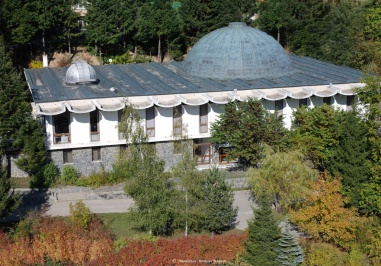 Планетария в Смоляне является крупнейшим в Болгарии, а также одина из крупнейших в Европе. Она была открыта 6 сентября 1975 года и до сих пор является одной из самых посещаемых ...
Планетария в Смоляне является крупнейшим в Болгарии, а также одина из крупнейших в Европе. Она была открыта 6 сентября 1975 года и до сих пор является одной из самых посещаемых ...
Тридратското Зхдрело
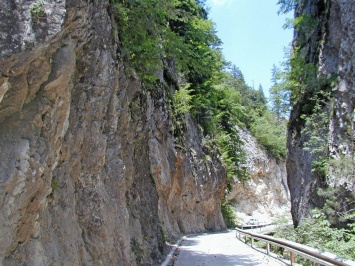 Триград ущелье является каньон вертикальных мраморных пород в горах Родопы, севере села Триграда. Это один из крупнейших и наиболее привлекательных карстовых образований в Болгарии и служит привлечению приглашающей для скалолазов. ...
Триград ущелье является каньон вертикальных мраморных пород в горах Родопы, севере села Триграда. Это один из крупнейших и наиболее привлекательных карстовых образований в Болгарии и служит привлечению приглашающей для скалолазов. ...
"Санкт-Афанасий Великий" Церковь, г. Чепеларе
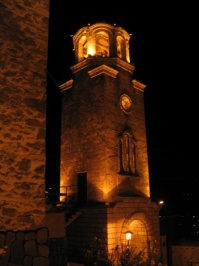 "Святой Афанасий Великий» - построена в 1834 году (с 16 сентября по 14 ноября), а на следующий была освящена в 1835 году (11 июля - воскресенье) от Пловдива митрополита Никифора. ...
"Святой Афанасий Великий» - построена в 1834 году (с 16 сентября по 14 ноября), а на следующий была освящена в 1835 году (11 июля - воскресенье) от Пловдива митрополита Никифора. ...
Болгарская Национальная астрономическая обсерватория "Рожен"
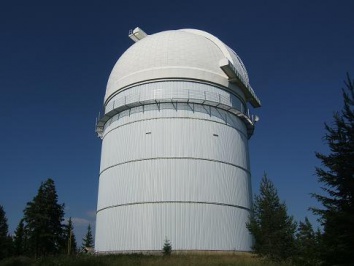 Рожен Национальная астрономическая обсерватория была официально открыта 13 марта 1981 года, в то время как регулярные наблюдения здесь началась с сентября 1980 года. NAO Рожен самая крупная болгарская "одноразовая" -инвестицион ...
Рожен Национальная астрономическая обсерватория была официально открыта 13 марта 1981 года, в то время как регулярные наблюдения здесь началась с сентября 1980 года. NAO Рожен самая крупная болгарская "одноразовая" -инвестицион ...
Turlata
 Characteristic landscape, mountain meadows and the eponymous peak. Also there is a fortress of cultural significance.
Characteristic landscape, mountain meadows and the eponymous peak. Also there is a fortress of cultural significance.
Ethnographic Museum “Rodopska prosveta”
 The museum exhibition was created in 1983 and stores archeological, ethnographic and medieval artifacts, tools, livelihood and the rich cultural and historic heritage of Devin and surrounding villages. It occupies ...
The museum exhibition was created in 1983 and stores archeological, ethnographic and medieval artifacts, tools, livelihood and the rich cultural and historic heritage of Devin and surrounding villages. It occupies ...
Exhibition of handicrafts
 The bazaar-exhibition shows the great variety of the unique local handy crafts. It reveals the beauty and colorful hues of the Rhodopes terlitzi, halishta, chergi, bags and tapestry, as well ...
The bazaar-exhibition shows the great variety of the unique local handy crafts. It reveals the beauty and colorful hues of the Rhodopes terlitzi, halishta, chergi, bags and tapestry, as well ...
Micro Dam in the village of Davidkovo
 It is located at 1600m. altitude. It is fenced with a wall on clay basis. Its depth reaches 9.50 m. with around 180 000 m3 water. There are many kinds ...
It is located at 1600m. altitude. It is fenced with a wall on clay basis. Its depth reaches 9.50 m. with around 180 000 m3 water. There are many kinds ...
Крепость Moмшиловаa (Пoвидзос)
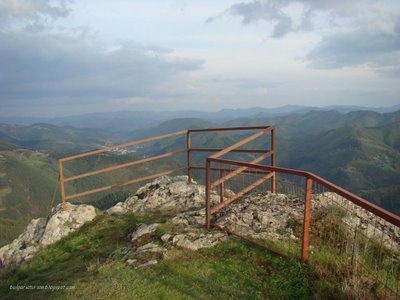 Летописец XIV века Никифор Григорa пишет в своей книге "византийская история", что Moмшил является болгарский человек с горы Родопи, "сын неизвестных родителей" и более поздние авторы описывают его как человек ...
Летописец XIV века Никифор Григорa пишет в своей книге "византийская история", что Moмшил является болгарский человек с горы Родопи, "сын неизвестных родителей" и более поздние авторы описывают его как человек ...
Momchilovski Dol
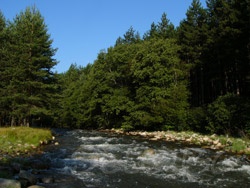 Managed reserve "Momchilovski Dol" (Momchilovtsi village) It was established in 1968 to preserve the natural century Austrian pine (Pinus Nigra) forest for the comprehensive study of forest habitats. Its area ...
Managed reserve "Momchilovski Dol" (Momchilovtsi village) It was established in 1968 to preserve the natural century Austrian pine (Pinus Nigra) forest for the comprehensive study of forest habitats. Its area ...
International Youth Folklore Gathering "Orpheus Holidays"
 International Festival of Children"s and Youth Groups for authentic folk performing arts "Orpheus Holidays", also known as the Children"s Orpheus Holidays - Smolyan. The children from all ethnographic regions of ...
International Festival of Children"s and Youth Groups for authentic folk performing arts "Orpheus Holidays", also known as the Children"s Orpheus Holidays - Smolyan. The children from all ethnographic regions of ...








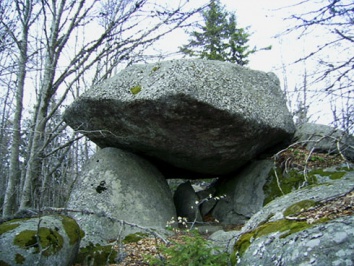 Dolmen west of Buynovo village, Smolyan District.
Dolmen west of Buynovo village, Smolyan District.

